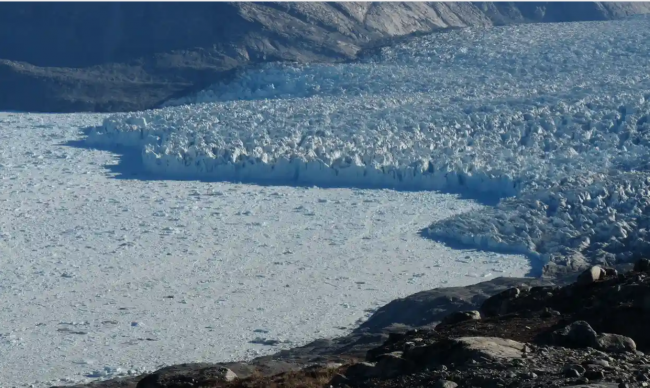Articles Menu

Oct. 19, 2022
The next pandemic may come not from bats or birds but from matter in melting ice, according to new data.
Genetic analysis of soil and lake sediments from Lake Hazen, the largest high Arctic freshwater lake in the world, suggests the risk of viral spillover – where a virus infects a new host for the first time – may be higher close to melting glaciers.
The findings imply that as global temperatures rise owing to climate change, it becomes more likely that viruses and bacteria locked up in glaciers and permafrost could reawaken and infect local wildlife, particularly as their range also shifts closer to the poles.
For instance, in 2016 an outbreak of anthrax in northern Siberia that killed a child and infected at least seven other people was attributed to a heatwave that melted permafrost and exposed an infected reindeer carcass. Before this, the last outbreak in the region had been in 1941.
Next, they sequenced RNA and DNA in these samples to identify signatures closely matching those of known viruses, as well as potential animal, plant or fungal hosts, and ran an algorithm that assessed the chance of these viruses infecting unrelated groups of organisms.
The research, published in Proceedings of the Royal Society B, suggested that the risk of viruses spilling over to new hosts was higher at locations close to where large amounts of glacial meltwater flowed in – a situation that becomes more likely as the climate warms.
The team did not quantify how many of the viruses they identified were previously unknown – something they plan to do in the coming months – nor did they assess whether these viruses were capable of triggering an infection.
However, other recent research has suggested that unknown viruses can, and do, loiter in glacier ice. For instance, last year, researchers at Ohio State University in the US announced they had found genetic material from 33 viruses – 28 of them novel – in ice samples taken from the Tibetan plateau in China. Based on their location, the viruses were estimated to be approximately 15,000 years old.
In 2014, scientists at France’s National Centre for Scientific Research in Aix-Marseille managed to revive a giant virus they isolated from Siberian permafrost, making it infectious again for the first time in 30,000 years. The study’s author, Jean-Michel Claverie, told the BBC at the time that exposing such ice layers could be “a recipe for disaster”.
Even so, Aris-Brosou’s team cautioned that predicting a high risk of spillover was not the same as predicting actual spillovers or pandemics. “As long as viruses and their ‘bridge vectors’ are not simultaneously present in the environment, the likelihood of dramatic events probably remains low,” they wrote.
On the other hand, climate change is predicted to alter the range of existing species, potentially bringing new hosts into contact with ancient viruses or bacteria.
“The only take-home that we can confidently put forward is that as temperatures are rising, the risk of spillover in this particular environment is increasing,” said Aris-Brosou. “Will this lead to pandemics? We absolutely don’t know.”
Also unclear is whether the potential for host switching identified in Lake Hazen is unique within lake sediments. “For all we know, it could be the same as the likelihood of host switching posed by viruses from the mud in your local pond,” said Arwyn Edwards, the director of the Interdisciplinary Centre for Environmental Microbiology at Aberystwyth University.
However, “we do urgently need to explore the microbial worlds all over our planet to understand these risks in context,” he said. “Two things are very clear now. Firstly, that the Arctic is warming rapidly and the major risks to humanity are from its influence on our climate. Secondly, that diseases from elsewhere are finding their way into the vulnerable communities and ecosystems of the Arctic.”
[Top photo: A glacier undergoing submarine melting in south-west Greenland. Photograph: Donald Slater/University of Edinburgh/PA]